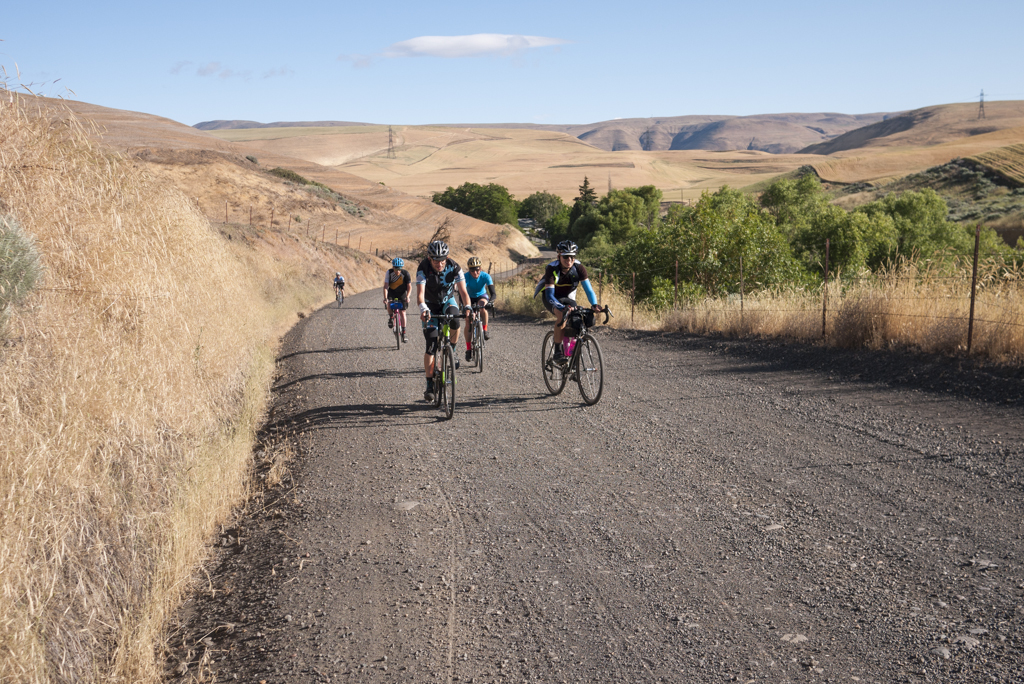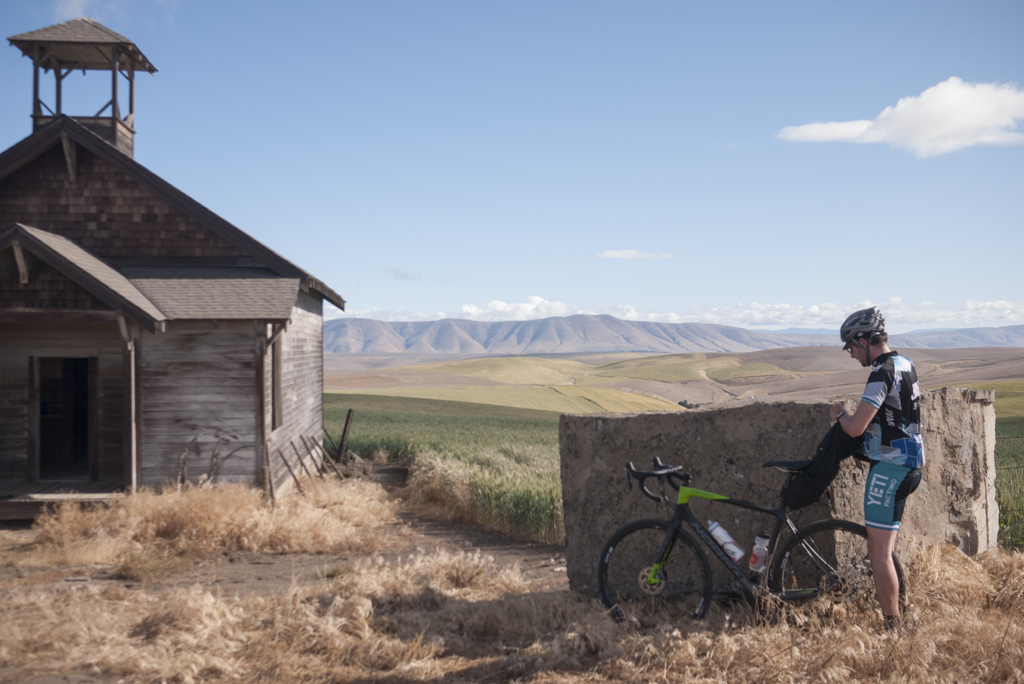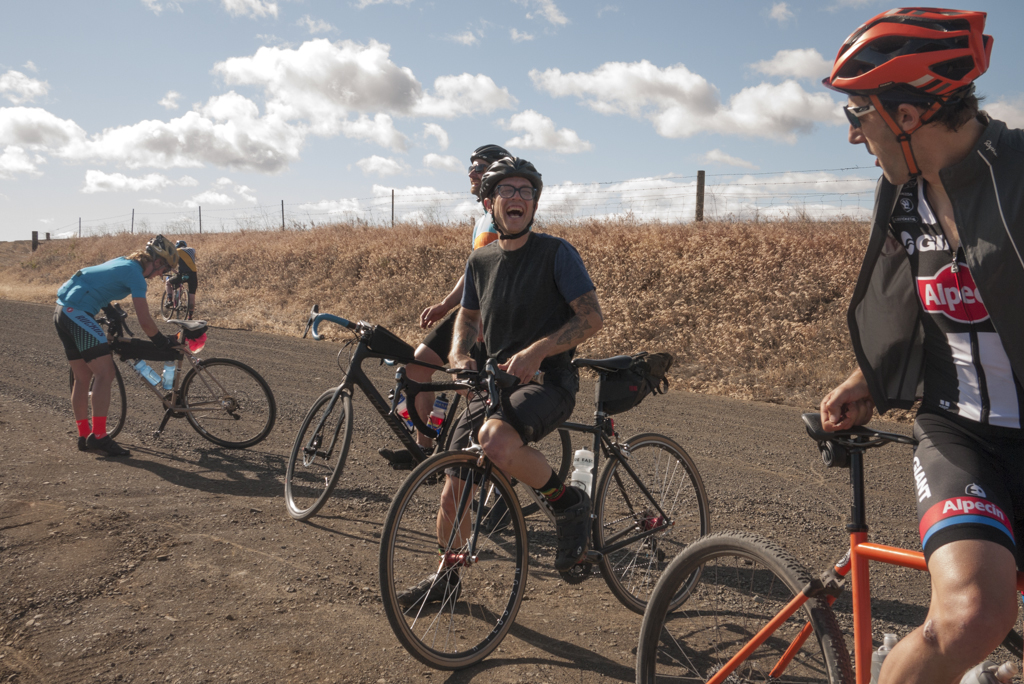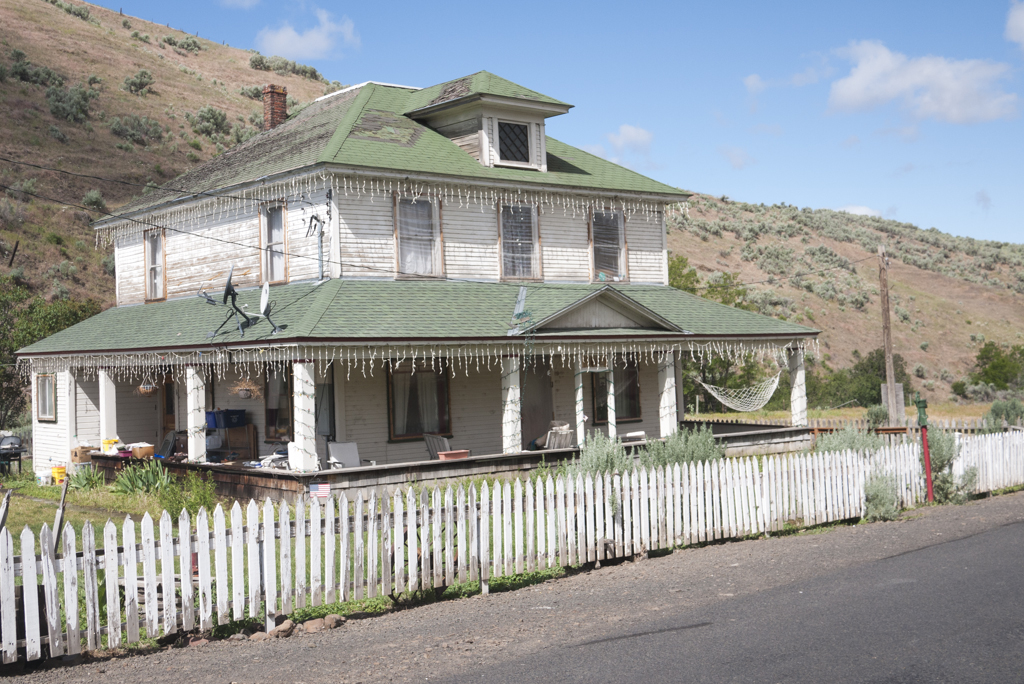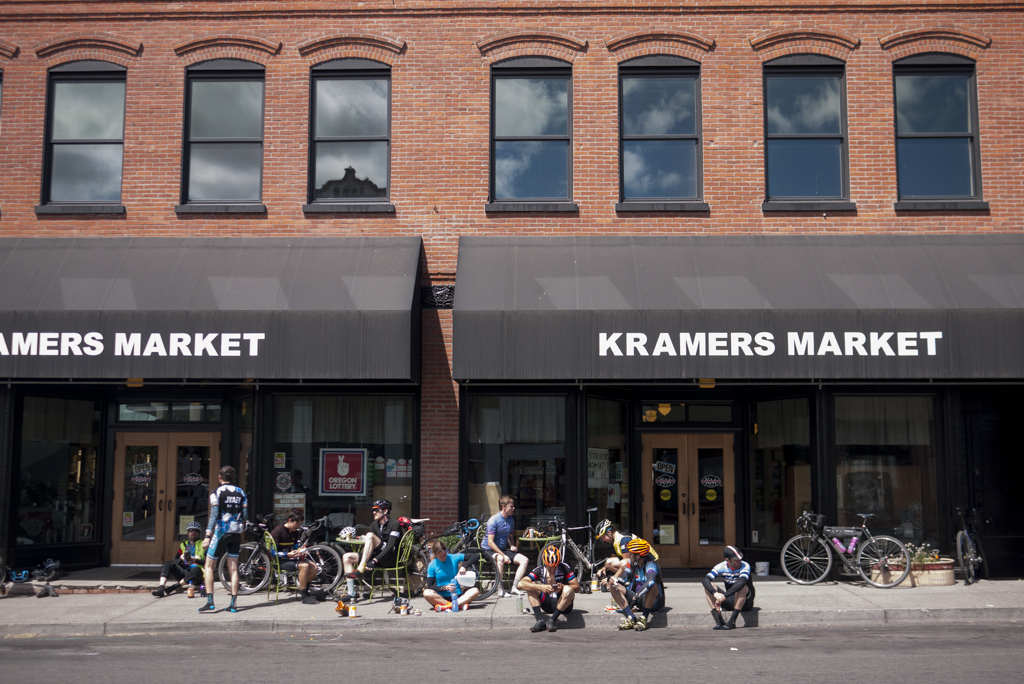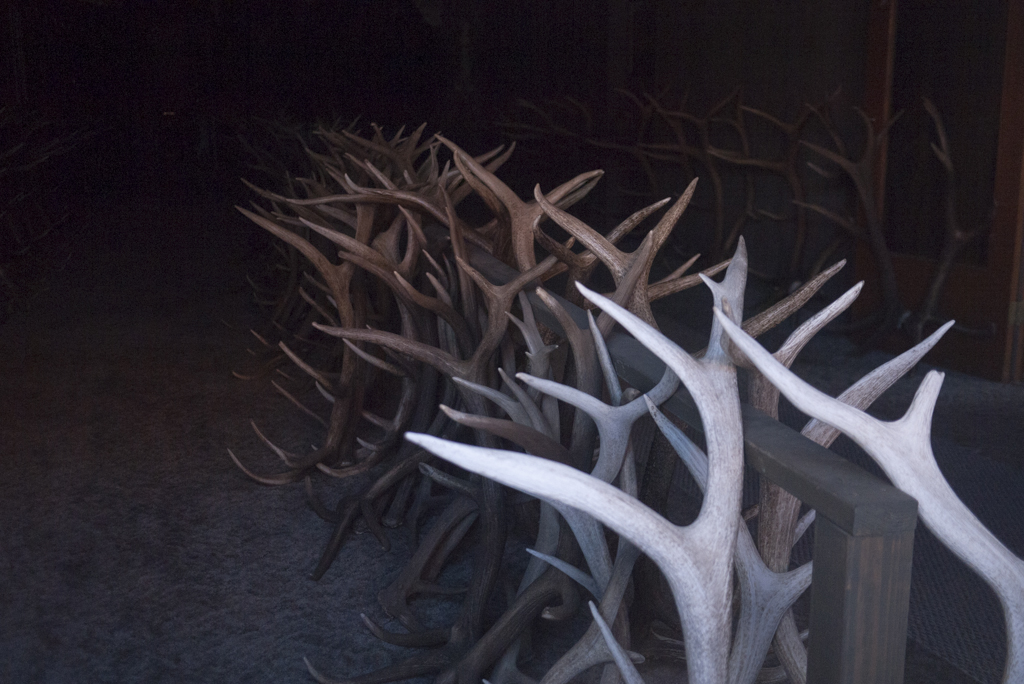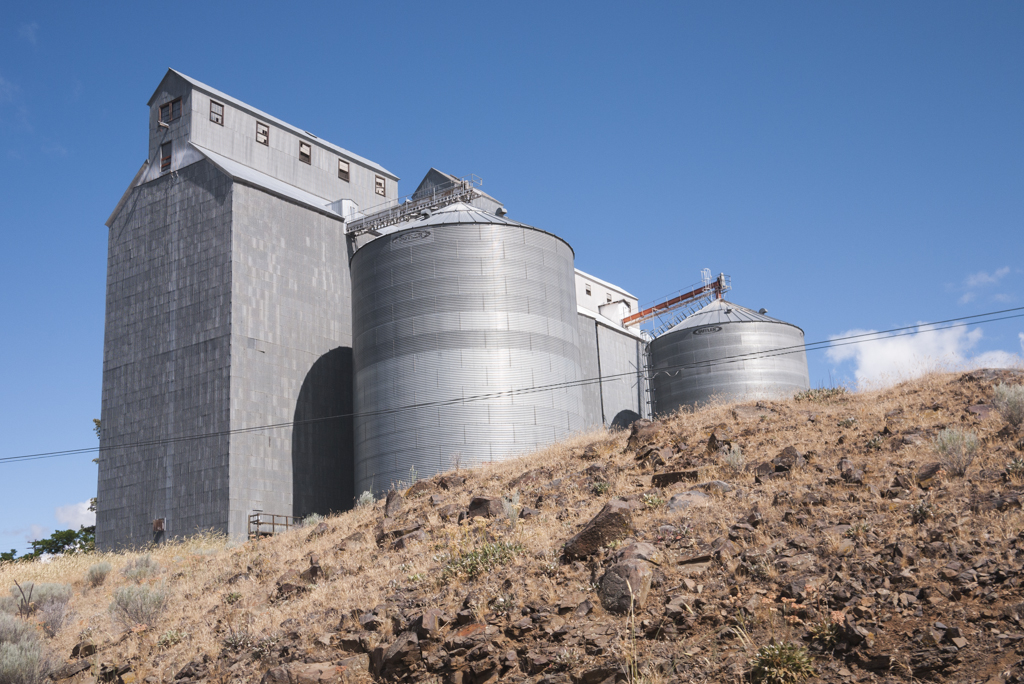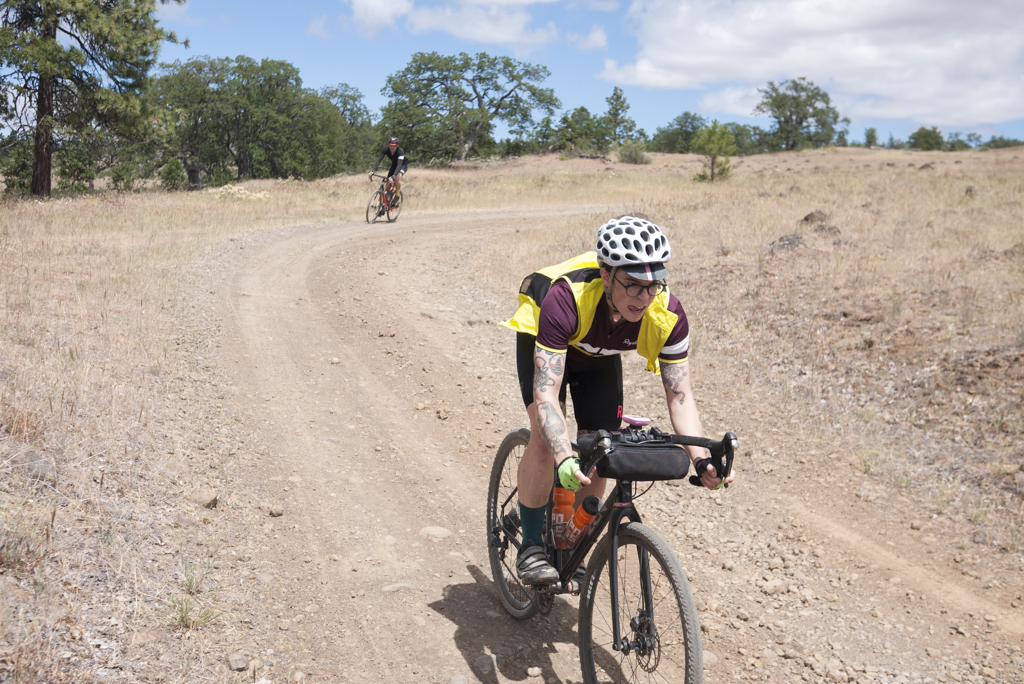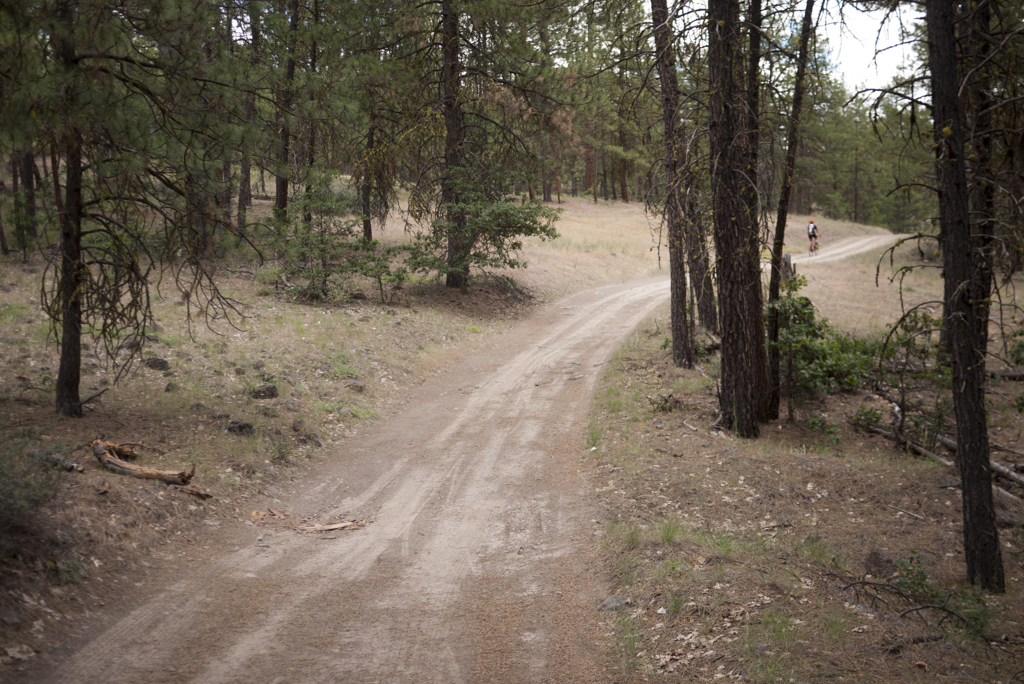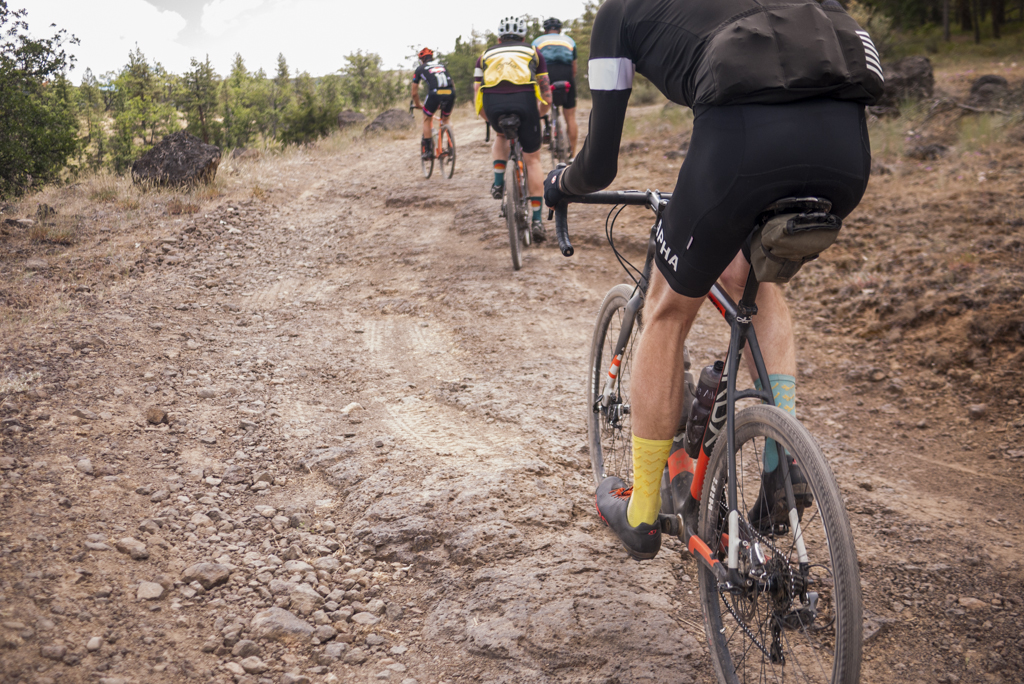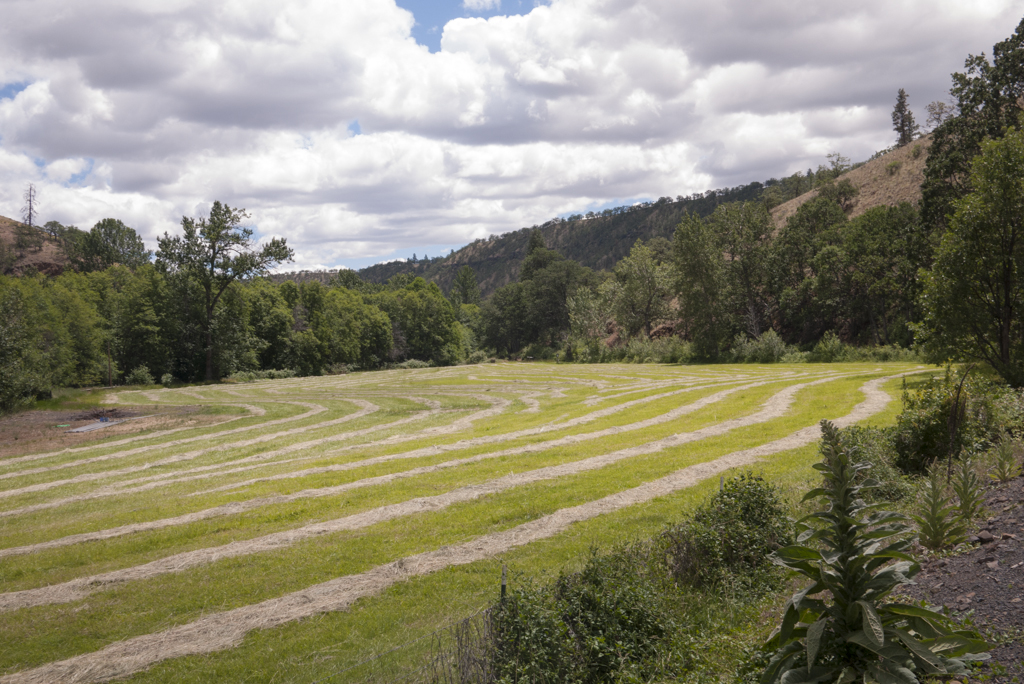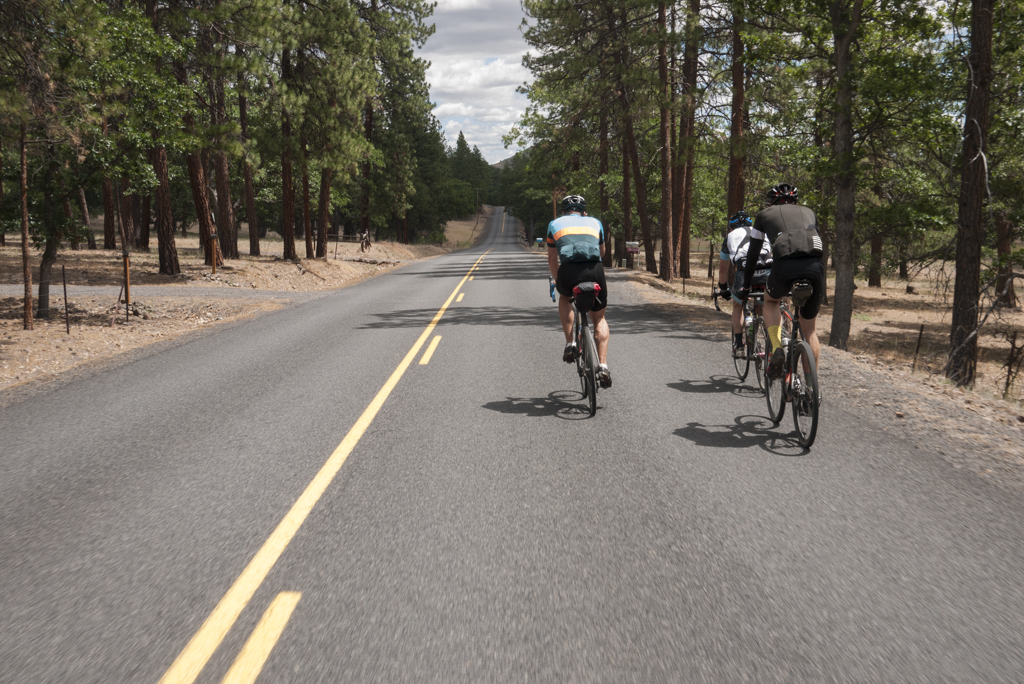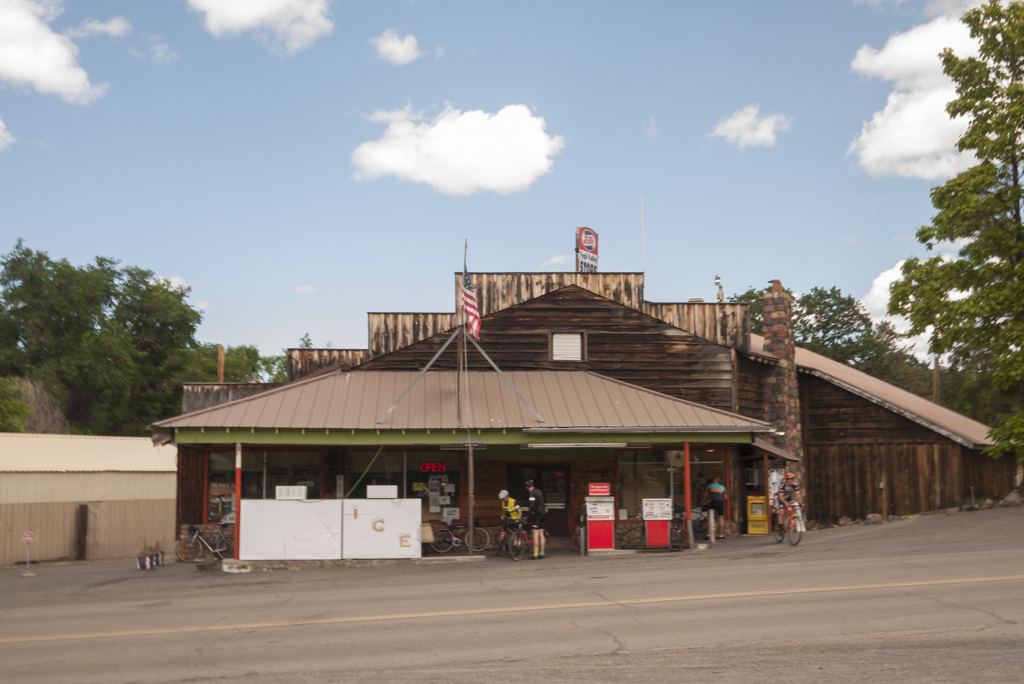Oregon Stampede 2016
Having done The Oregon Stampede the last two years, I’m still struggling to make sense of the ride - not the route - the route is spectacular, and as I’ve said before I really love that part of Oregon that’s just beyond the Cascade rain curtain. I love the big sky and the rolling fields, and the views of multiple major peaks. I guess my difficulty lies in understanding why it’s not more popular these days. My first guess was timing. The last two Stampedes were run in September and temperatures were pushing 100. I asked Donnie Kolb of Velodirt for some history and insight about the Stampede and this is what he had to say…
"The first event was in September 2009. I'd just run the first Dalles Mountain 60 in April that year and 3 people showed up (including my girlfriend at the time, so really 2 people...). Up until then I'd never organized anything, never put myself out there for anything, ever, so it was completely out of character not only to do the DM60, but to have basically no one show up and not be discouraged. I still can't figure out what pushed me to do any of this, but it's been the funnest, most interesting thing I've ever been a part of. I can still remember at the 1st Stampede thinking that this was the single most amazing thing I've ever accomplished - getting a bunch of random people together, none of whom I knew, and everyone was crushed but everyone loved it. If you didn't know - I was a complete outsider from the bike world at the time, I knew literally no one in the local bike scene and basically just rode around by myself or with the g/f riding gravel anywhere I could find it - I was literally just some random schmoe who liked to ride bikes. Everyone I now know in the bike world and some of my best friends I met through VeloDirt events. It's not hyperbole to say that route changed the entire course of my life."
The route is exposed, not a lot of tree cover and the services are sparse – there are convenience stores at mile 40 and 67 on the route. So it’s a really hard ride, but nowhere near impossible. I’ve heard many folks say it’s the hardest ride they’ve ever done. Didn’t they used to cap the ride at 75 people? It could be that Velodirt used to be more involved and they drew big crowds. I look back at 2013 posts and hear about shiny spurs trophies being awarded to fastest finishers.
Donnie Kolb:
“After discovering the Dalles Mountain route I'd been riding all the gravel out there, checking out all the roads on both sides of the Deschutes, finding all the best roads. Because all of it was so good, I wanted to figure out how to combine it logically, which was a challenge. I finally gave in an included the Sherars Bridge area (couldn't find a non-paved way around) and the White River Wildlife area for lack of better alternatives. I remember riding the White River with Sue Marcoe and Joe Partridge and I was shocked Joe thought it'd be awesome to include it - I thought people would be pissed it was too rough. Bid kudos to Joe for calling that one right and convincing me to include it. ”
Last year I did the route for the first time as a 2-day bikepack as prep for the Oregon Outback. I then did the 1-day on event day on September 12. The same heat that had scared me away the previous year was in full effect, but I figured if I waited for perfect conditions, I’d never do it. There were only about 13 people that rode it last year. Our group of 5 went clockwise, the other group of 7 (Ruckus dudes) went counter-clockwise. We saw each other in Friend, exchanged brief high fives and kept grinding. Don’t get me wrong, the ride is challenging, but if you’ve been riding regularly you can do it! When I look back on Strava, I can see that elapsed time was over 12.5 hours and ride time was 9:23
Now that I’ve finished it twice, I still don’t know where to put it in my mind. It’s hard, but not that hard. It’s a big day of climbing and it’s mostly gravel. Whether it’s heat or headwinds, there will be some factor outside your control that makes it doubly hard, but you find a way to dig deep and get it done. There are times when I doubt the decision to do rides like this. When I’m 8 hours in, it seems like a waste of time and effort. But when you finish and you realize you’ve done something that seemed impossible before you did it, your sense of possibility increases, you know you can now do more than you originally thought. If I can do this hard thing, what else have I not considered possible that I should try? You’re a better person for having done it. You’re stronger now. You had your doubts, but you made it home before dark…maybe just.
It’s not bikepacking. It’s two nights of car camping with a day of gravel riding. It's all about comfort and enjoying yourself before and after 12 hours on your bike.
For me that means stretching out in a 2-man tent, bringing my Thermareset Luxury Map mattress and a real pillow. This year I was testing a Mountain Hardwear Ghost UL2 tent, which is light enough for bikepacking, but it seemed like a good chance to test it. It worked great. For sure on the compact side for base camp, but it will be a great choice for future trips. Easy set-up and quite comfortable.
I cook my oatmeal at home, throw it in the cooler and then just add some water and reheat at camp. Same with eggs. I hardboil them at home. Bring some salt and pepper…magic. Breakfast with minimal work on event day.
I’ll do the same with a dinner. Last time it was lentils with sausage. Personally, after that much ride time, the last thing I want to do is cook from scratch on a camp stove.
Coffee – bring the good stuff. Aero Press is my brew method of choice. Bring the moka pot, some good beans. Share it with your campsite buddies.
I know it’s totally nerdy, but I blend my recovery smoothie at home and put it in a vacuum insulated bottle. I know none of this is necessary, but it gives me peace of mind to know my nutrition is dialed. I can just worry about the work of pedaling my bike all day with no excuses.
I like to bring my bike ready to ride if I can. Once I get to camp I’m busy setting up camp, preparing food, or talking to people, so working on my bike gets neglected. Save yourself one more thing to forget and do your bike work at home before you leave. Using extra bags? Put those on at home. I just like to load my food and bottles and I’m ready to ride. Maybe I’ll allow myself one last second-guess on tire pressure. OK, now I’m ready. Wait…where did I put that beef jerky. (you get the idea)
BEER has always been an integral part of the Oregon Stampede…
I just got this MiiR growler, so I hit Breakside on Dekum on Friday and filled it with their award-winning Pilsner. I brought few (stackable) Pint Cups too…you know…one less thing to put in the landfill.
THE RIDE
No exhaustive ride report this time. We've already done the blow-by-blow of the route. Let’s just say the first part to Dufur was hard for me. We had a good group until the schoolhouse, then I had to find my own rhythm. The headwinds were cool and strong - clouds kept blocking the sun. We did a quick bottle fill up and hot case session in Dufur. ($1.50 for a chicken strip and 3 jojos! What?) Bless Kramer's Market! A nice local fella told me about the antler collection across from Kramer’s market and how he likes to hunt for morels.
Paul LaCava was my ride buddy for the day. He was motivated to keep moving, so we pushed on. The next section (Dufur to Tygh Valley) is much easier in my opinion, so that went well. The wildlife preserve is fun and technical and we were joined by Ron and Brandon from OMTM and Kurt from 21st Ave. Bicycles. We took turns alternating taking photos and ripping descents while not crashing in baby heads and loose rock piles.
The pavement from the Wildlife Preserve and Tygh Valley is always a welcome respite from the gravel. We enjoyed easy miles and the camaraderie of the group. I marveled how well I felt in Tygh Valley, funny how much 30 degree cooler weather will help! (100 last year, 70 this year) But don’t get too cocky! We still had 52 miles to ride, including the dreaded 10-mile paved climb from Shearars Bridge. After Tygh Valley, Paul does this thing when he’s trying to break through a hard spot where he drills it, so he punched it on the climb. I’m not sure how he does it. I do this thing where I dial it back to conserve energy. We all have our strategies. We had to plop down on the side of the road at one point and eat the last of our sandwiches - well Paul finished his chicken strips and I finished my PB&J.
This is the hard part. It’s not the hardest part of the route, it's just the fact that you’re 8 hours in and you know the headwind is gonna suck, and you realize you’re not exactly flying at this point, you’re just hoping for steady progress. Mentally this is where you draw on every bit of experience you have. I’m thankful for all those shitty headwinds on training rides on Marine Drive, because now I know to get low and keep as much speed as you can. I’m thankful for all those core and upper body workouts in the gym because my low back isn’t hurting, my shoulders are holding up well. I’m super thankful for that. There is a lot of unraveling that could be happening at this late hour, but instead I’m grateful for what strength I do have, and I’m able to look at the way the wind ripples the fields of wheat/barley, I’m lifted by the swifts that glide by me with ease. I realize this is the sweetest part of the day. I’m able to find peace on the bike without hating the wind. I’m just doing my best. I think this is what they call a flow moment. I’m just witnessing the beauty and pedaling my bike. I’m a part of the landscape. Before long the odometer clicks 100 and it’s not far from Gordon Ridge. We got this! Paul doesn’t stop at the summit. He’s anxious to finish. I eat one last bit of jerky and we bomb the ridge, wondering about the three tracks that seem to go all over the road (were those guys OK?) I do my best to make straight lines in the deep gravel – to be steady at speed and make a mental picture of the soft hills that flank the Deschutes at the same time – it’s the art to enjoying these things I think. We’re multitasking in these moments taking it all in, keeping a good grip on the bars, breathing, smooth pedaling, keep speed for the roller, ok ease up, save some legs…still 14 miles to go…
We made it back to camp without too much struggle. The headwind was much worse on the Outback last year, so I count my blessings that when I pedal downhill it actually feels like a descent. Before we know it we’ve reached 206, which means 2 miles to camp! Done. Dusted. Fist bumps high fives. What a day! So glad to be done! Hey I’m not destroyed (well maybe a little) Let’s have a couple beers. We greet the rest of the crew as they trickle in. We make food, relive the day. We did great, individually, collectively…I put my feet up in my recliner, get inside my sleeping bag and fade in and out of consciousness. OK, maybe I’m more tired than I thought. Thanks again to Velodirt for creating and sharing the route, to Donnie Kolb for the Stampede story, and to 21st Ave. Bicycles for hosting, and to you that showed up and pedaled with us, and finally to you for hearing the story.
TCog (Salty Dog) The only person who has done every Stampede!
WHAT WORKED
Bike/Tires - I've been ride testing a Parlee Chebacco with Clement X'Plor MSO 40c tires. (60psi rear, 50 psi front) I'm loving this bike/tire combo. Both the bike and the tires are purpose-built for rides like this and the Chebacco is extremely comfortable on long hard rides like the Stampede. Highly recommended (full review to follow in the coming months)
Drink/Food - I put a third bottle in a Revelate Mountain Feed Bag. Camera (Lumix GF1) and food went in a Revelate Gas Tank. Speaking of food, I brought my own flax bars and Krave Beef Jerky, and bought a Chicken strip and 3 jojos in Dufur and in Tygh Valley I got jojos, a banana, and a coke. I drank NBS nutrition in my bottles. (I probably went through 6 bottles) NBS is worth mentioning since it's Stacy Sims latest project - she came up with the formulas for both OSMO and Skratch! She knows hydration. I drank OSMO preload the night before and the morning of the ride. I also drank a Skratch matcha in the afternoon for a little caffeine boost.
Clothing/Helmet/Shades/Shoes - 7Mesh MK1 Bib Shorts, Rapha Lightweight Jersey, Rapha ProTeam Base Layer, Assos arm protectors, 7Mesh Resistance Jacket, Teko merino/poly socks, Giro DnD gloves, Giro Synthe MIPS helmet, Oakley Prizm Jawbreakers, Shimano XC90 shoes
Fighting the Wind - I was thankful for the aero qualities of the Synthe helmet, the wind protection and optics of the Jawbreakers, and the lightweight/packable/wind-blocking qualities of the Resistance Jacket. It all makes a difference out there!





